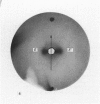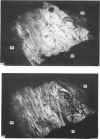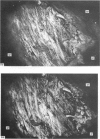Abstract
X-ray diffraction and determination of optical anisotropy show that collagen fibres in pig and human lumbar interspinous ligaments tend to be orientated parallel to the spinous processes. There is a distribution of fibre orientations about this preferred direction. Flexion of the spine does not change the direction of preferred orientation but the angular spread of fibres increases. This pattern of collagen fibre orientations is consistent with the interspinous ligaments being able to transmit tension from the thoracolumbar fascia to the vertebrae. Since the collagen fibres tend to be aligned antero-posteriorly, they provide a high efficiency of reinforcement in this direction. The lack of fibres orientated perpendicular to the spinous processes will lead to low strength in the cranio-caudal direction so that the ligament can provide little resistance to flexion of the spine.
Full text
PDF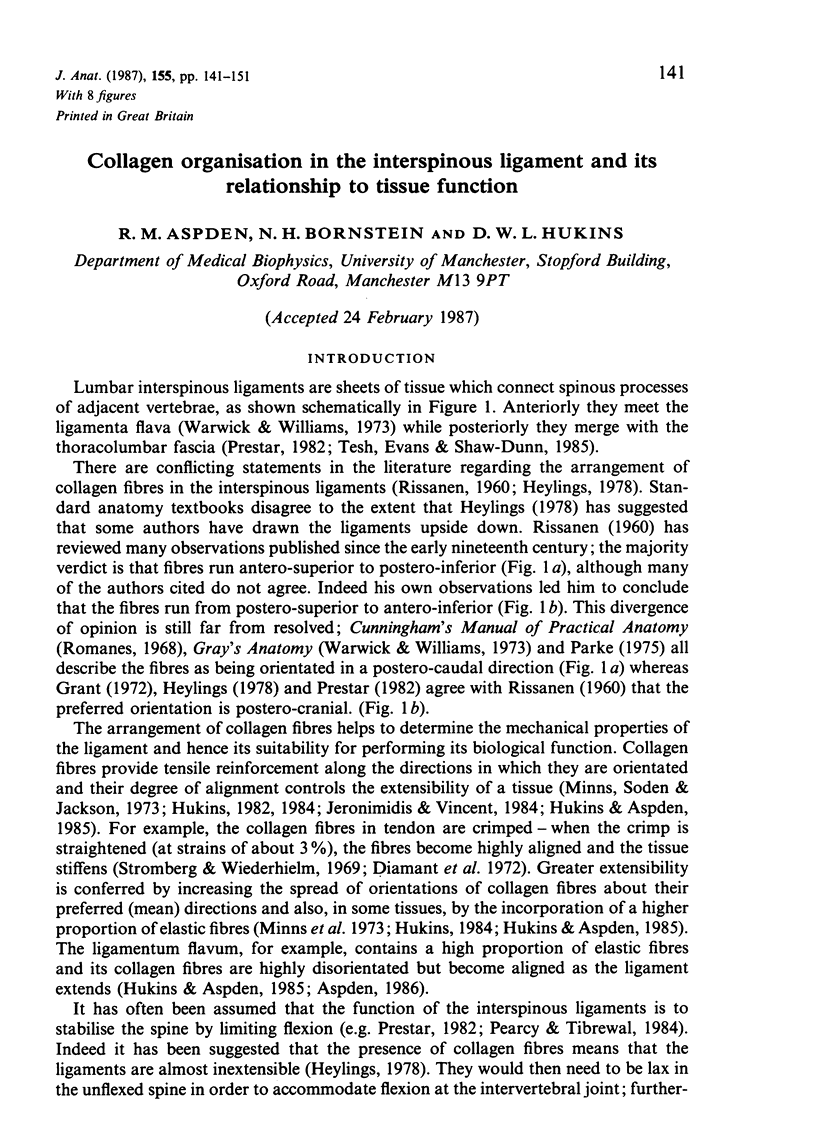
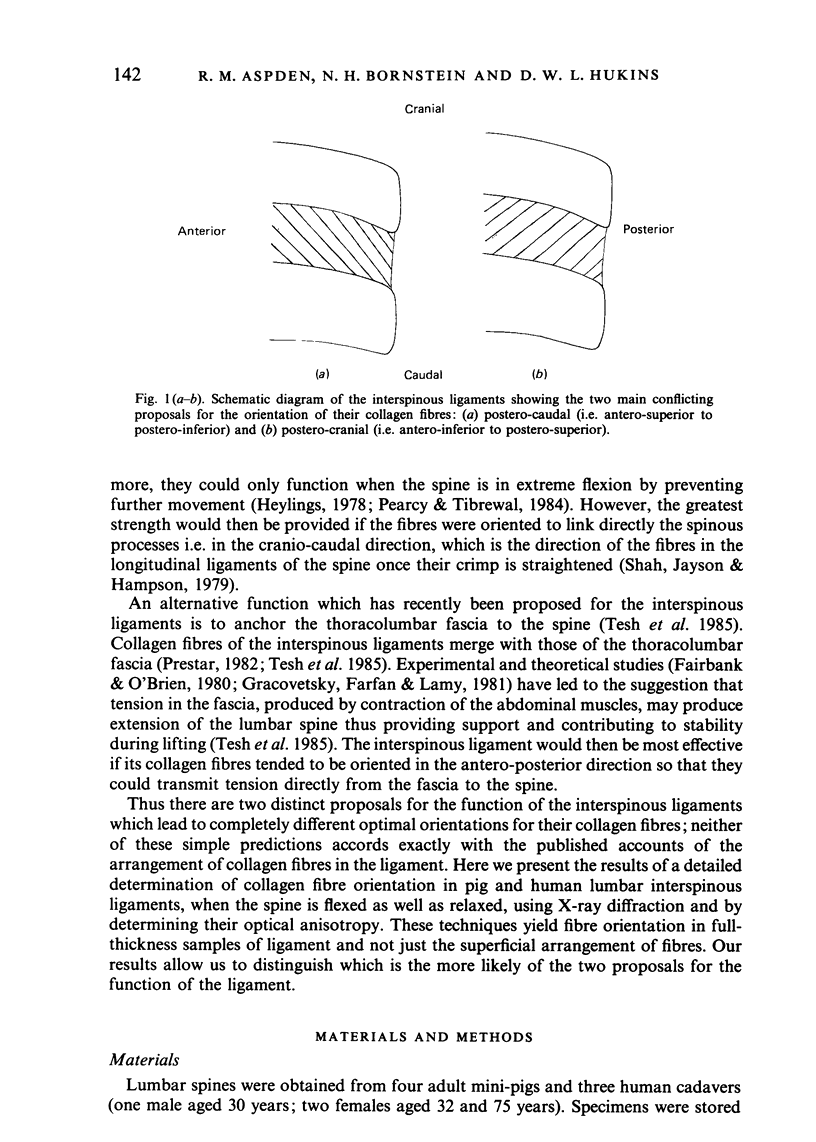
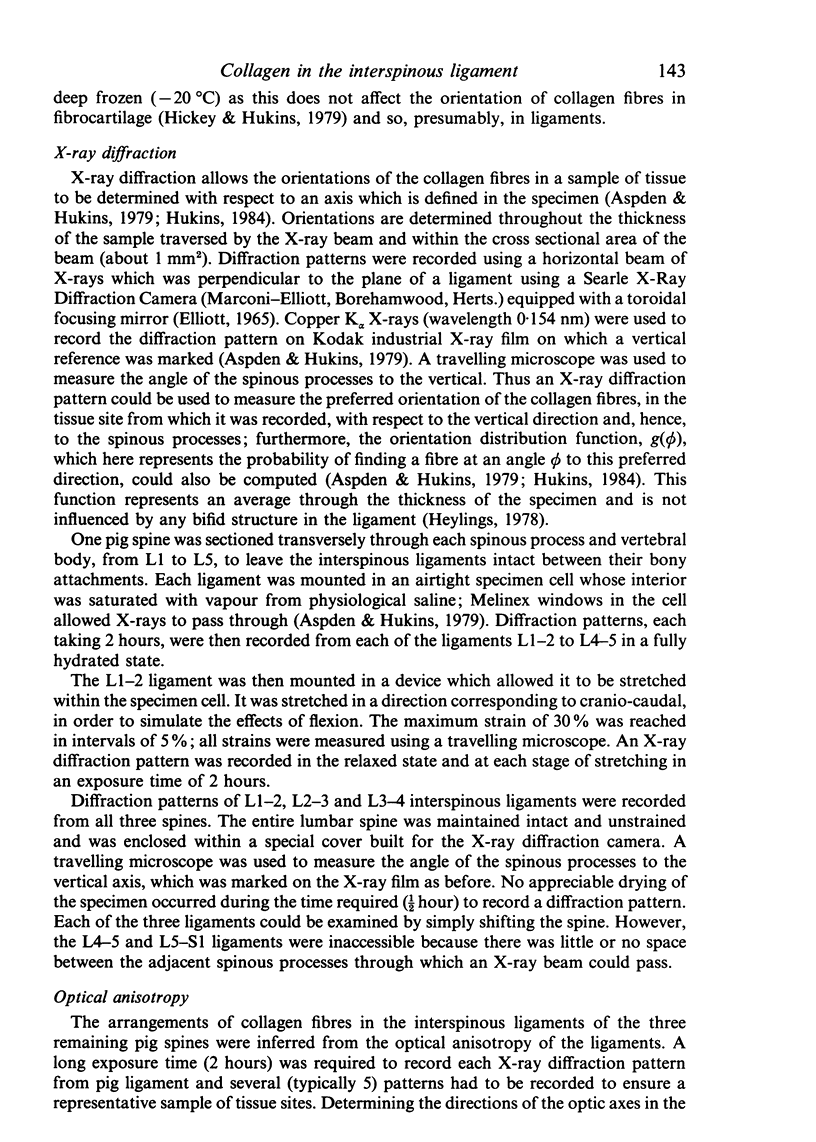
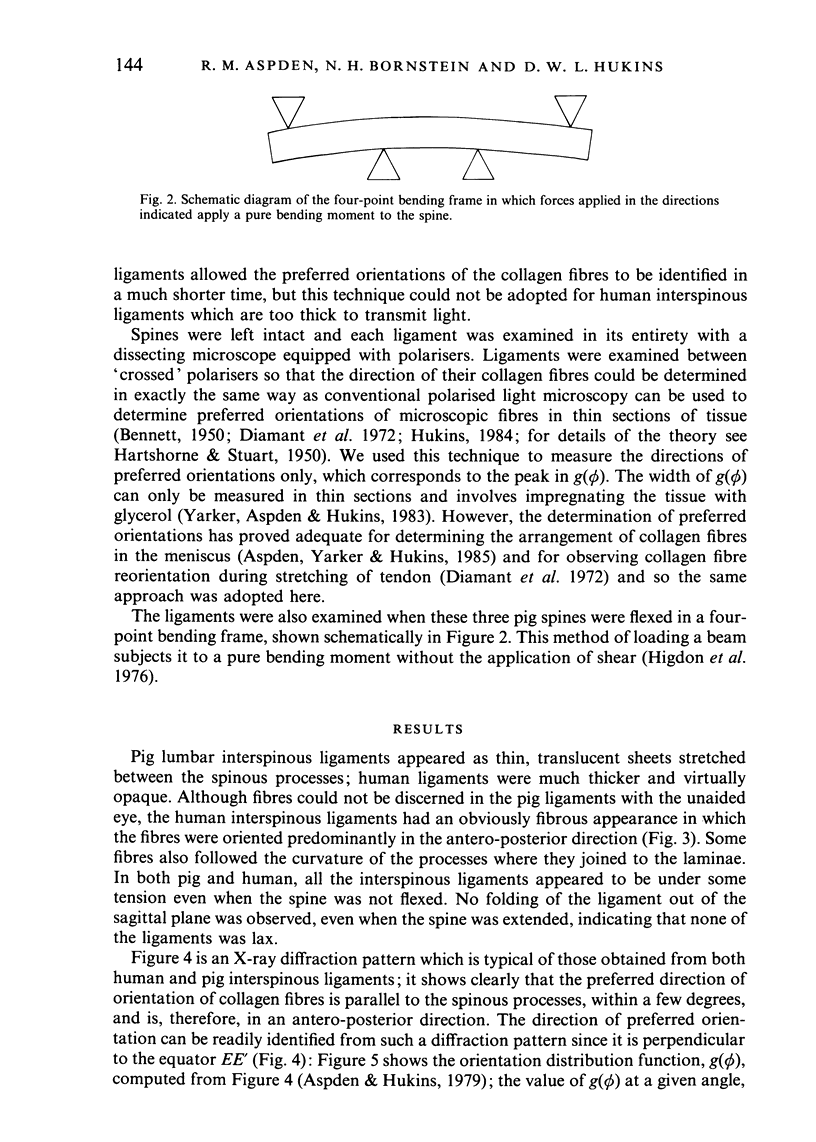
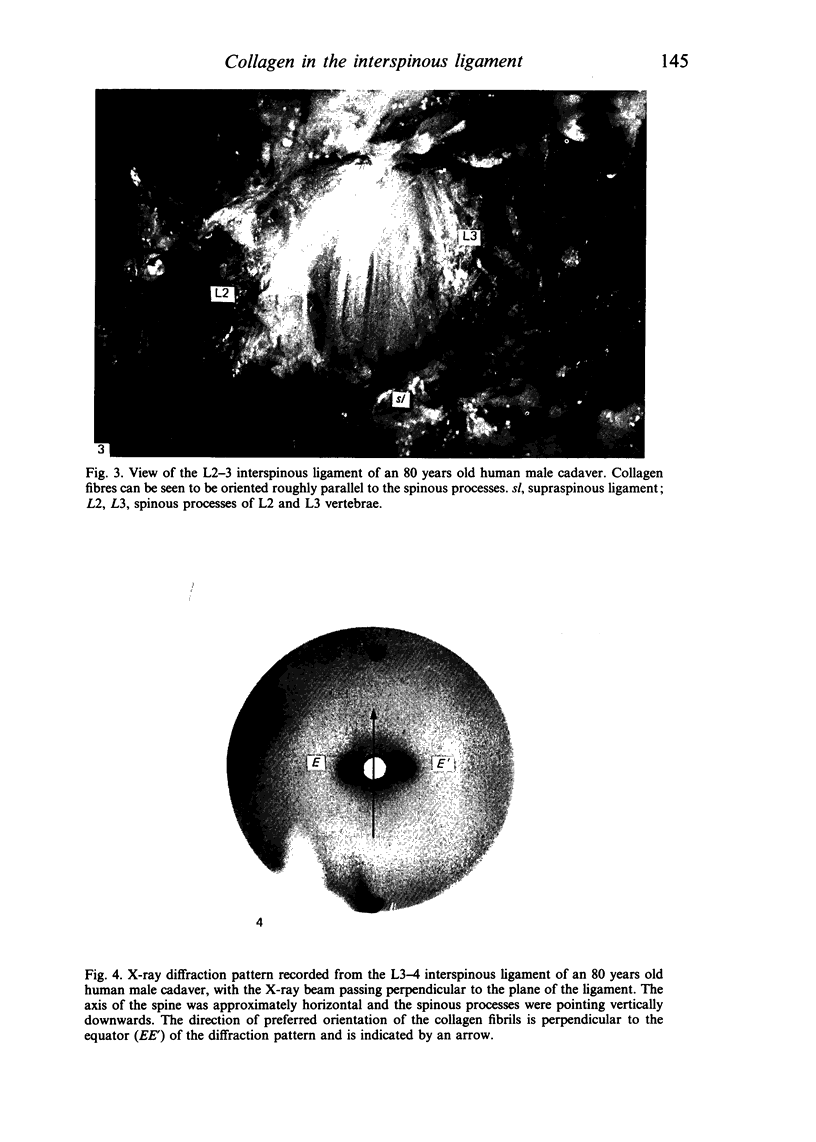

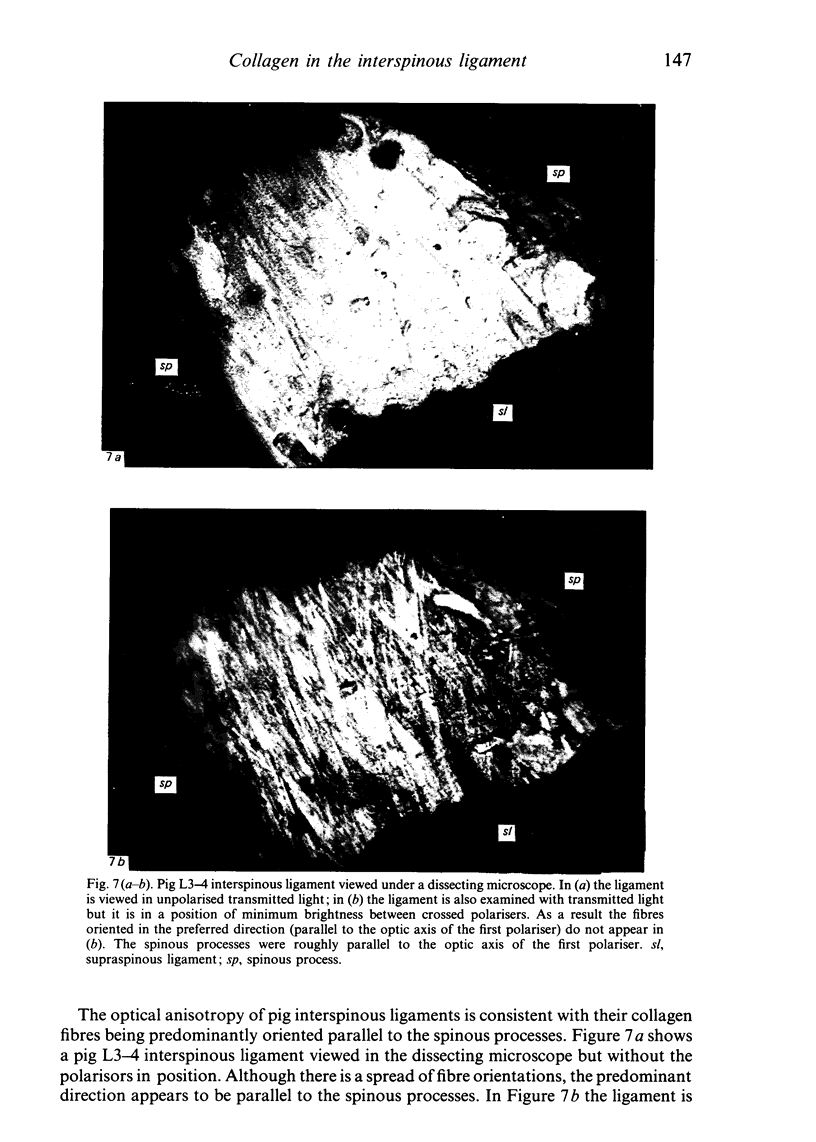
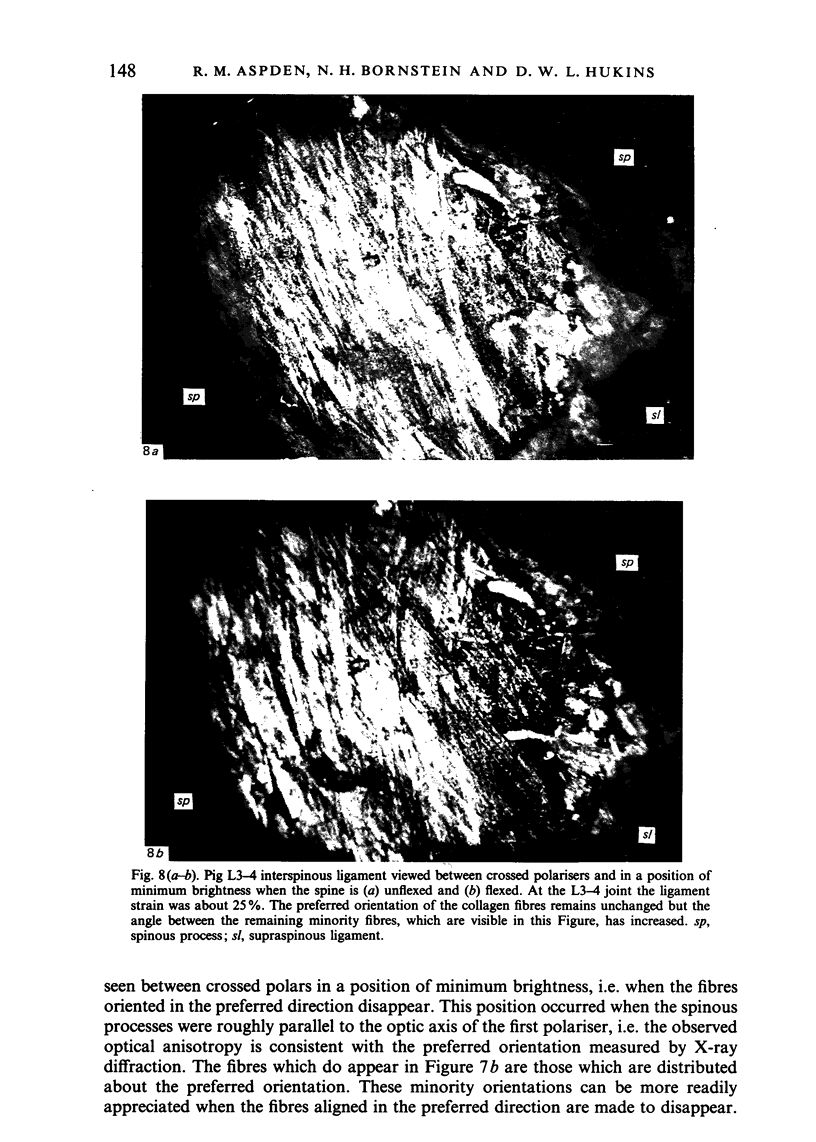
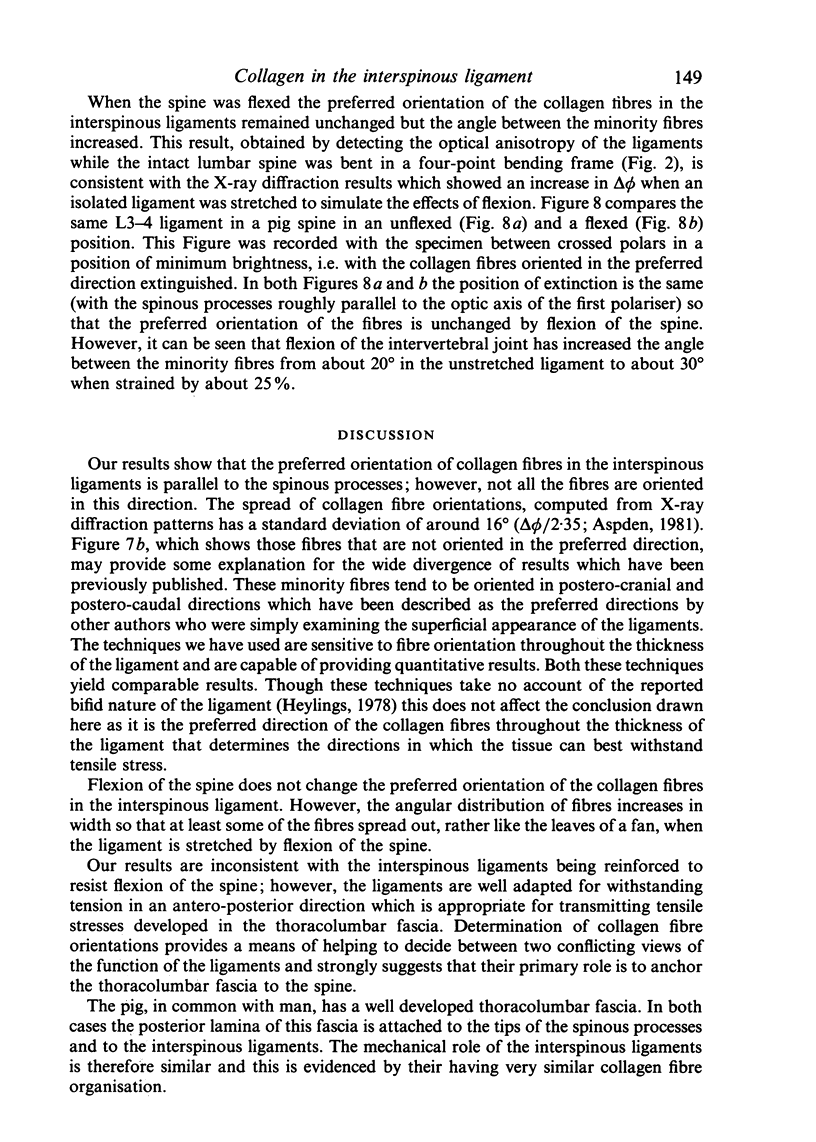
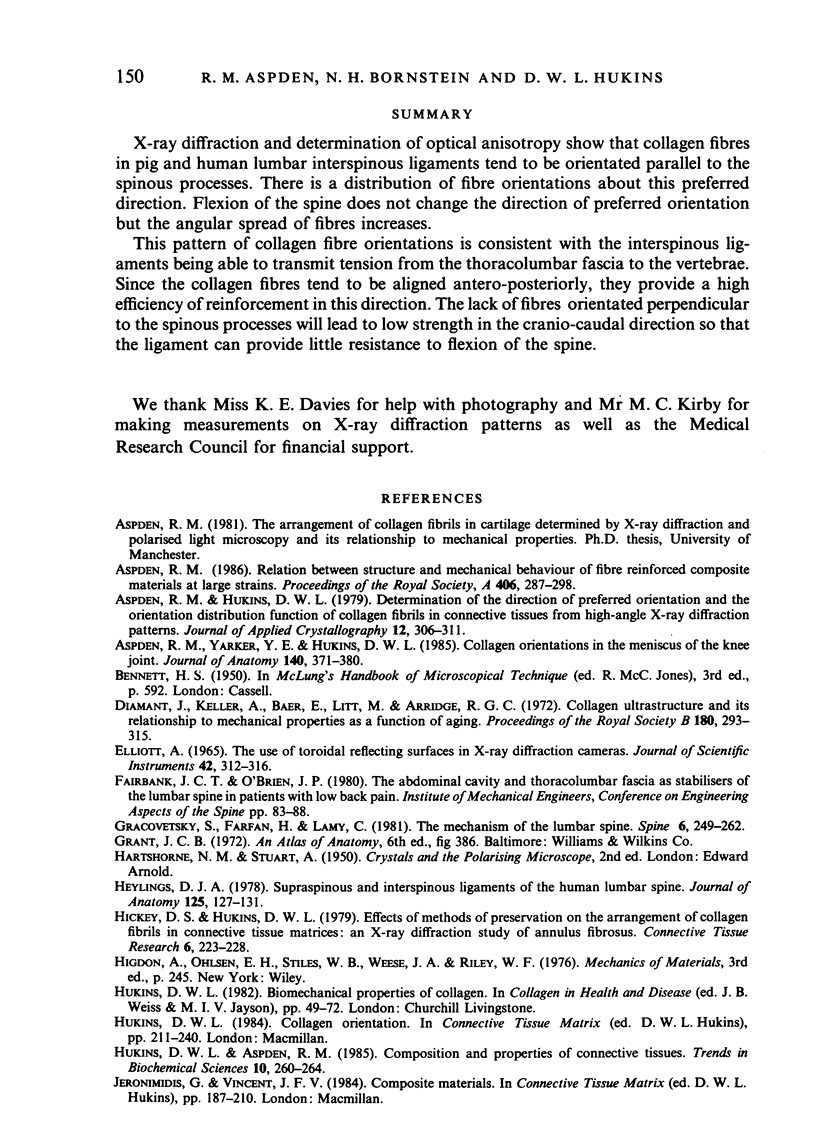
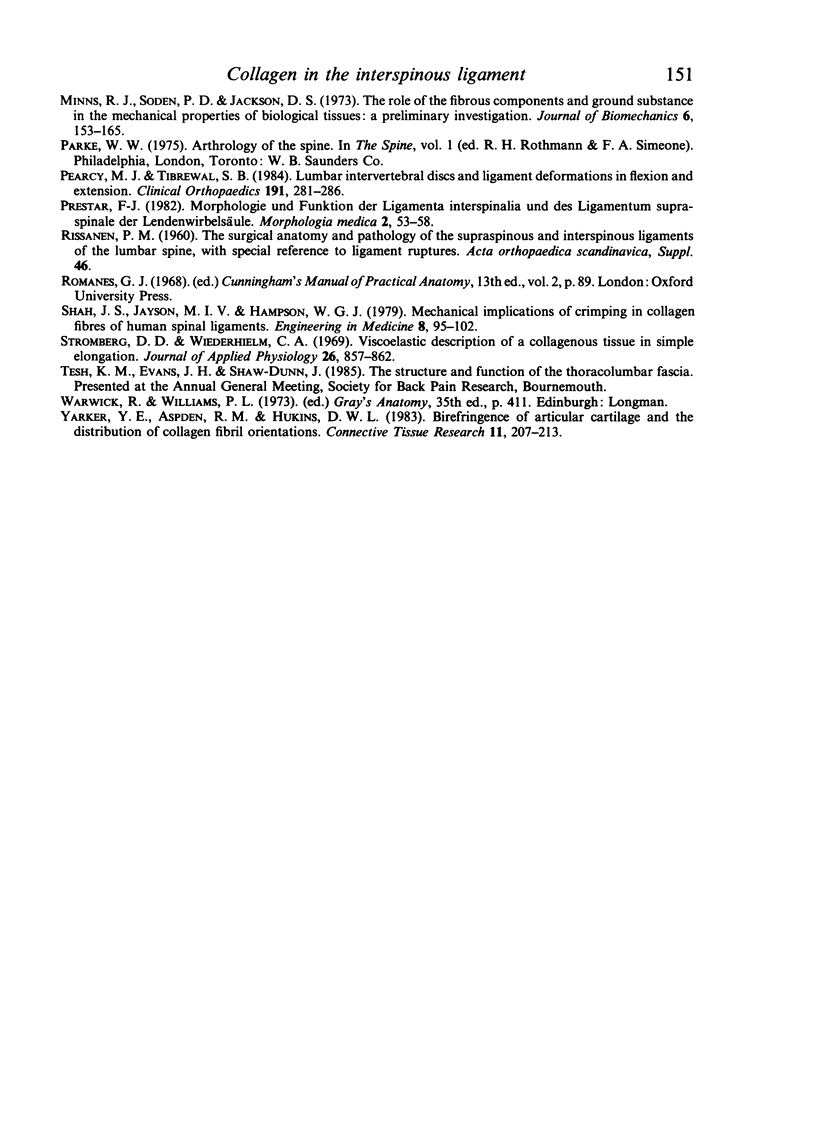
Images in this article
Selected References
These references are in PubMed. This may not be the complete list of references from this article.
- Aspden R. M., Yarker Y. E., Hukins D. W. Collagen orientations in the meniscus of the knee joint. J Anat. 1985 May;140(Pt 3):371–380. [PMC free article] [PubMed] [Google Scholar]
- Diamant J., Keller A., Baer E., Litt M., Arridge R. G. Collagen; ultrastructure and its relation to mechanical properties as a function of ageing. Proc R Soc Lond B Biol Sci. 1972 Mar 14;180(1060):293–315. doi: 10.1098/rspb.1972.0019. [DOI] [PubMed] [Google Scholar]
- Gracovetsky S., Farfan H. F., Lamy C. The mechanism of the lumbar spine. Spine (Phila Pa 1976) 1981 May-Jun;6(3):249–262. doi: 10.1097/00007632-198105000-00007. [DOI] [PubMed] [Google Scholar]
- Heylings D. J. Supraspinous and interspinous ligaments of the human lumbar spine. J Anat. 1978 Jan;125(Pt 1):127–131. [PMC free article] [PubMed] [Google Scholar]
- Hickey D. S., Hukins D. W. Effect of methods of preservation on the arrangement of collagen fibrils in connective tissue matrices: an x-ray diffraction study of annulus fibrosus. Connect Tissue Res. 1979;6(4):223–228. doi: 10.3109/03008207909152324. [DOI] [PubMed] [Google Scholar]
- Minns R. J., Soden P. D., Jackson D. S. The role of the fibrous components and ground substance in the mechanical properties of biological tissues: a preliminary investigation. J Biomech. 1973 Mar;6(2):153–165. doi: 10.1016/0021-9290(73)90084-5. [DOI] [PubMed] [Google Scholar]
- Pearcy M. J., Tibrewal S. B. Lumbar intervertebral disc and ligament deformations measured in vivo. Clin Orthop Relat Res. 1984 Dec;(191):281–286. [PubMed] [Google Scholar]
- Prestar F. J. Morphologie und Funktion der Ligamenta interspinalia und des Ligamentum supraspinale der Lendenwirbelsäule. Morphol Med. 1982 Feb;2(1):53–58. [PubMed] [Google Scholar]
- Stromberg D. D., Wiederhielm C. A. Viscoelastic description of a collagenous tissue in simple elongation. J Appl Physiol. 1969 Jun;26(6):857–862. doi: 10.1152/jappl.1969.26.6.857. [DOI] [PubMed] [Google Scholar]
- Yarker Y. E., Aspden R. M., Hukins D. W. Birefringence of articular cartilage and the distribution on collagen fibril orientations. Connect Tissue Res. 1983;11(2-3):207–213. doi: 10.3109/03008208309004857. [DOI] [PubMed] [Google Scholar]





